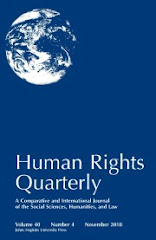Is the uneven acceptance of international courts (ICs) an indication of different conceptions of state sovereignty? The conventional idea of the Westphalian model is that it involved the principles of state sovereignty, legal equality of states, and non-intervention in internal affairs. The 1648 Peace of Westphalia often serves as a historical reference, even though the modern conceptions of state sovereignty hardly goes back to the 17th century and the Westphalian treaties of Münster and Osnabrück (Osiander 2001; Beaulac 2004). The idea of sovereignty evolved during the 19th and 20th centuries, yielding several versions. The one relevant here is international legal sovereignty, which implies recognition of polity and territoriality by other states and domestic authority structures that exclude external actors (Krasner 1999).
To explore whether different conceptions of sovereignty within the modern states system affect states’ acceptance of ICs, we categorize states according to a set of variables which includes colonial background, geopolitical position, political regime, legal system and resources. We then analyze how these factors correlate with the ratification of different types of ICs – two independent courts and two conflict resolution mechanisms connected to states’ broader acceptance of international organizations.
We analyze the acceptance of four ICs with a global reach – the International Court of Justice (ICJ), the International Criminal Court (ICC), the WTO dispute settlement mechanism (DSM), and the dispute settlement system under United Nations Convention on the Law of the Sea (UNCLOS), including the International Tribunal for the Law of the Sea (ITLOS). These ICs vary in interesting respect. Acceptance of the WTO dispute settlement follows from ratification of the treaty establishing the WTO, and similarly for dispute settlement under UNCLOS and for the criminal jurisdiction of the ICC. However, acceding to UNCLOS implies that states have the opportunity to use ITLOS, the ICJ or ad hoc arbitration for dispute settlement. The ICJ was established in 1945 as the principal judicial organ of the United Nations, but the UN member states are only bound by the competence of the ICJ if this is explicitly accepted by the relevant state. This selection allows us to explore the difference between accepting substantive treaty obligations sanctioned by an IC, and only accepting the IC. The motivation of states may be to ensure general acceptance of the substantive obligations, or of the IC – or both.
We employ a full dataset for when or if a country accepted each of these four courts. Using logistic regression analysis, we look for the links between a selected number of independent variables and the tendency to join the treaty that established each court. Is there a systematic pattern that indicates how the uneven judicialization of international law works?
Monday, June 12, 2017
Stiansen, Osterud, Føllesdal, & Ulfstein: Westphalia Waning? The Uneven Acceptance of International Courts
Øyvind Stiansen (Univ. of Oslo - Pluricourts), Oyvind Osterud (Univ. of Oslo - Pluricourts), Andreas Føllesdal (Univ. of Oslo - Law), Geir Ulfstein (Univ. of Oslo - Law) have posted Westphalia Waning? The Uneven Acceptance of International Courts. Here's the abstract:





